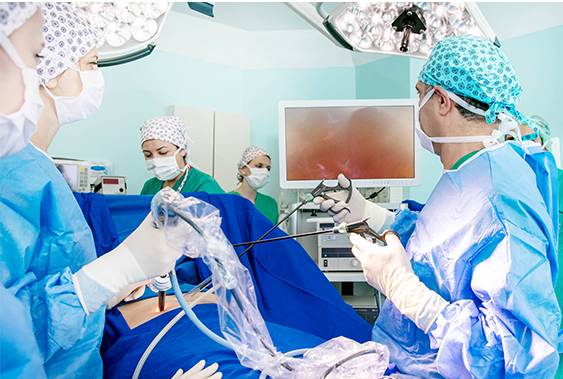More efficient tools. Better patient care.
Introducing new health care technologies is at the heart of what we do to continually improve patient care. This includes technologies to help patients in surgery, ICUs, hospital rooms and clinics. Here are a few innovations on the horizon that will not only improve patient care but create efficiencies for our providers and clinicians.
Streamlining emergency care.
If you’ve ever been in the emergency room, you’re familiar with the medical testing that takes place. Next year, new CloudMedx technology will streamline the testing process, so patients can either be discharged or admitted to the hospital sooner.
CloudMedx automatically alerts a patient’s care team when tests are ordered. This means the care team can get to work faster to perform the testing. It sends another alert when test results are ready. Then, the provider can determine whether it’s safe to discharge the patient or whether the patient needs to be admitted.

CloudMedx will also predict when our hospital emergency departments may start filling up – or are experiencing surges. This technology uses artificial intelligence to review emergency admittance stats for the past six months. It then develops a model predicting when surges may occur at each hospital.

Enhancing patient care by the sound of your voice.
Clinical voice technology improves the doctor-patient interaction by allowing providers to focus even more closely on patients, instead of needing to look at a computer screen to document the visit.
In the OR, voice technology will help surgical teams improve patient care. Alexa-like functionality will enable surgeons to start and stop actions, like timers, safety checklists and more, during surgery – just by speaking commands. Plus, it automatically adds this information to the patient’s Epic chart.
“In the highly complex surgical environment, this exciting new capability will enable our care teams to use voice commands to validate and authenticate tasks and processes,” said Dr. Nicholas Desai, HM chief medical information officer and HMSL chief medical and chief quality officer.
Better for nurses. Better for patients.
Another tool on the horizon will improve patient care by balancing nursing workloads on each unit. The tool, a patient acuity score card, ensures one nurse isn’t handling most of the patients with more severe illnesses. Patients are rated on a 10-point scale indicating how much care they require. Then the patients are evenly distributed among the nurses on the shift. This helps every patient receive the best care – in addition to increasing nursing satisfaction.
Improving patient care. Into 2022 and beyond.
Innovative tools like these are enhancing our ability to provide the Houston Methodist standard of unparalleled patient care. These initiatives are increasing efficiencies for our care teams by improving processes and tools that enhance the patient experience.
